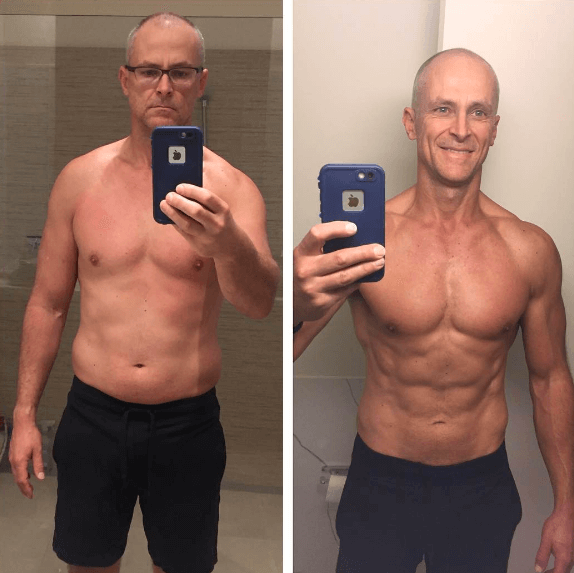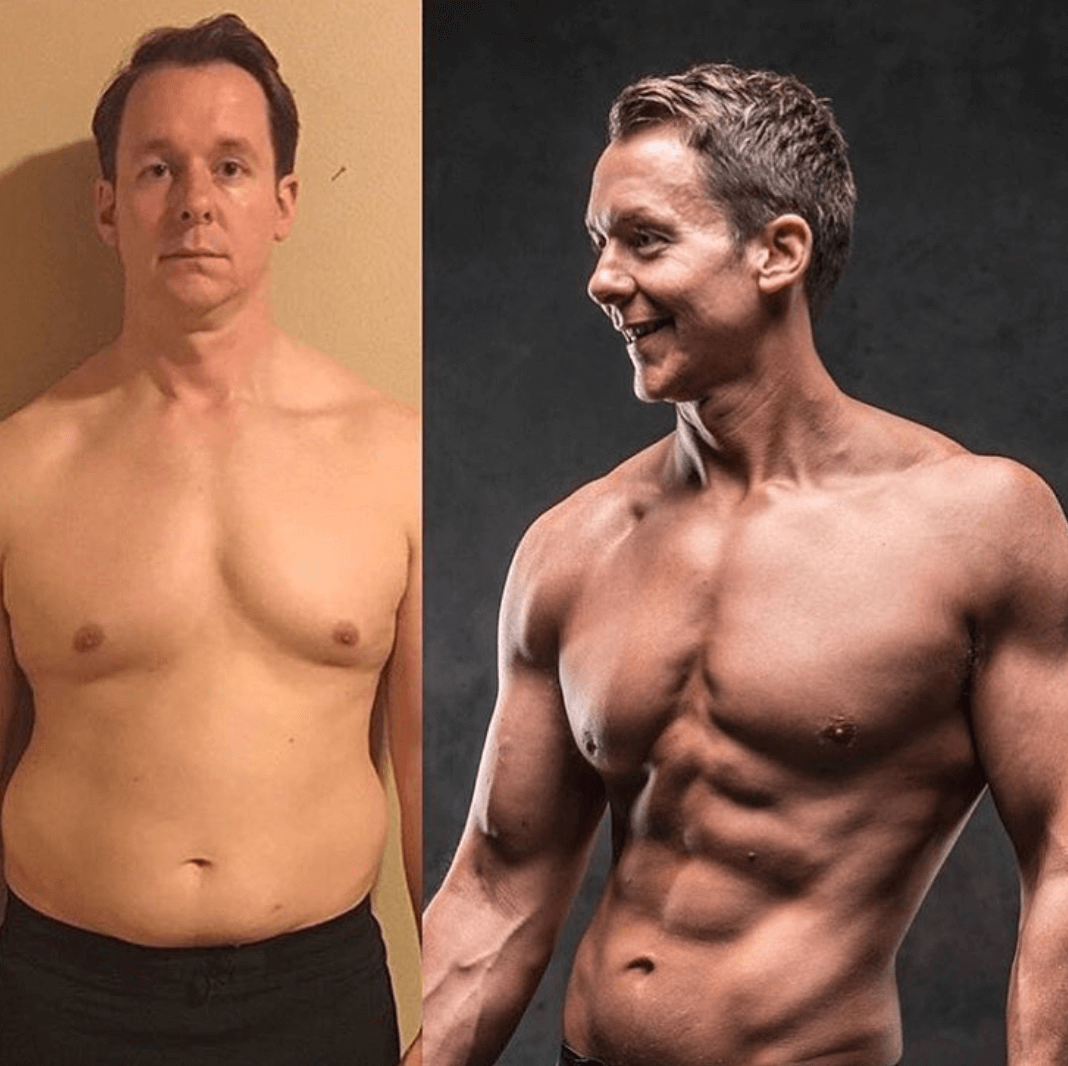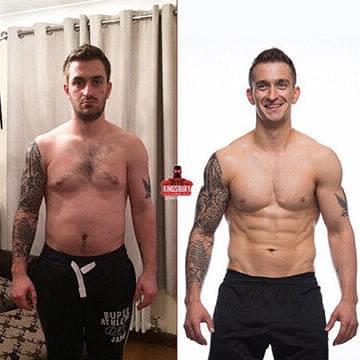We’ve all heard the phrase ‘life begins at 40’, but for too many people, when life begins, the ability to get, or stay, fit ends. The thing is, it really doesn’t have to be this way. I’ve trained many people, including some of Hollywood’s biggest names, that were 40 years of age or more and they still looked amazing.
When mid-life comes calling, I still believe you have a huge potential to get in shape. When we reach that point in our lives, it’s common that life changes; the kids might be growing up, so don’t need (or want) you to play with them as much. They’re playing football with their mates, rather than you, but it doesn’t mean you need to give up on fitness.
Your lifestyle might change as you get older, but your body type will still determine how easily, or how much, muscle you can add, just the same as when you were younger, albeit with some slight tweaks.

I’m not saying that training past 40 isn’t daunting, it can be, but it can also be an incredibly life-affirming experience, assuming you understand some core elements:
- Whilst no-one wants any form of injury, any injury you do suffer will take longer to heal, compared to when you were in your twenties.
- Hormone imbalances are more common as our bodies adjust biologically to growing older.
- Ageing affects the elasticity of the skin, so don’t expect yourself to look as ‘cut’ as younger models, it also means more wrinkles, cellulite, etc.
It’s not all bad news however, strength training means you can still add new muscle mass and increase your cardiovascular endurance. You can also help to build balance and flexibility through even the most basic exercise and physical activity. However, regular, moderately intense exercise can also help reduce your risk of heart disease, heart attack, high blood pressure, high cholesterol and even diabetes.
If you’ve hit 40 and are ready to get yourself in shape, there’s no better time. If you’re still not convinced, then let me take you through some of the benefits of exercise in later life.
Going Through Changes
Let’s cut to the chase. Turning 40 means your body is changing. There’s not a lot you can do about the biological effects of ageing, but there is something you can do about how it feels. Your body might not be the machine it was when you were 20, it just means you have to modify the intensity of the exercise you do and the routines you include to manage the physical, physiological and biological changes that you’re going through.
Studies have shown that, after 40, we tend to gain 10 lbs in weight every 10 years. This happens, for the most part, due to the loss of muscle mass. In actual fact, the net gain is usually around gaining 15 lbs of fat, but losing 5 lbs of muscle. When this happens, people tend to diet, but that leads to more muscle loss. For every pound of muscle you lose, the body’s metabolism depresses by about 40 calories.
As you age, your body’s hormones change with it. Whilst your testosterone levels will decrease, so you need to do everything you can to keep it naturally high. You can do this, firstly, by losing weight. Overweight people are more likely to have low testosterone levels to start with, so losing some of that extra padding will help.
You can do this by limiting or, if possible, eliminating entirely, sugar from your diet. Sugar, especially fructose, is key to weight loss. If eliminating it completely is impossible, then try and keep your intake below 25g per day. It might be easier than you think. Choose water instead of sugary drinks, try coffee without the milk (it’s really quite nice) and try and avoid processed foods where possible.
If you’re cutting out sugar, try to fill the gap with healthy fats. By ‘healthy’ I mean things like olive, palm or coconut oil, avocados, raw nuts and grass-fed meats. We’re talking about mono polyunsaturated fats and saturated fats; all essential for building testosterone. Your body actually needs saturated fats from animal and vegetable sources, so replace the sugar, grains and carbs filled with starch with healthy fats.
When it comes to exercise, high-intensity exercise combined with intermittent fasting has been shown to boost testosterone levels. High-intensity exercises include a 3 minute warm-up, then exercising as hard as you can for 30 seconds, recovering for 90 seconds, then repeat 7 more times. Intermittent fasting also boosts testosterone by increasing the expression of satiety hormones like leptin, peptide-1, cholecystokinin and insulin.
Another way to increase your testosterone levels is by consuming plenty of zinc. Zinc comes from protein-rich foods like meat and fish, raw milk and cheese, yogurt and kefir (as long as it’s made from raw milk) and beans. It can be tricky to eat enough zinc, especially if you’re a vegetarian. The way food is grown and processed means that much of the zinc it originally had is either removed through fertiliser and pesticides used as they grow. In addition, it can also be lost in the way food is prepared. Zinc supplements are a great way to counter-act this, but stick to less than 40mg per day.
Whilst we’re talking about vitamins and minerals, Vitamin D is also a great way to increase your levels. You can do this through supplements, but also simple things like exposure to sunlight (even safe sun-beds can help). It’s made much easier with summer approaching.
When you’re in the gym, you can also help to increase your testosterone levels by doing some strength training. Providing the intensity is high enough, you can use squats or deadlifts to help boost your levels. These exercises work a large number of muscles but, by increasing the weight and lowering the number of reps, you can give your testosterone levels a kickstart.
Finally, the last way you can increase your testosterone is by reducing stress. I know that can be easier said than done, but stress actually releases a hormone called cortisol, which blocks the effects of testosterone. Whatever you can do to reduce stress in your life will only help your life over 40. This can be as simple as getting a good night’s sleep. Older men secrete less testosterone overnight as it is, so less sleep means less of the hormone you need the most.
What Not To Eat
We’ve talked a little about what you can eat to help raise your testosterone levels, so let’s now look at what not to eat. One food to definitely avoid is soy. Soy can be detrimental to sperm counts which has a link to testosterone levels. In addition, being overweight only compounds the effects of soy on the body, driving sperm counts even lower.
This next one might not be very popular, but it’s beer! Don’t worry, I’m not telling you never drink alcohol (although it won’t hurt), but the hops in beer are oestrogenic; a group of hormones which promote the development and maintenance of female characteristics. Not that there’s anything wrong with that per se, it just won’t help with your testosterone levels.
Preserving Your Muscle Mass
As we’ve touched on, turning 40 will mean most people will start to lose muscle mass as it’s replaced by fat. It doesn’t have to be this way. We want to preserve the muscle mass you have and build on it. By combining an aerobic exercise regime with some strength training, a healthy diet and some stretching, it can help to compensate for any losses.
It will also help to get your metabolism up and keep those extra pounds from sneaking on. After 40 you need to concentrate on a lifestyle revolving around exercise, strength training and eating the right foods.
Let’s remember at this point that, as you get older, whether you like it or not, your body needs a little more managing. Be aware of your joints and take things easy. Start with low-impact exercises and low weights, but also stretch before and after. Any injury will take longer to heal and that can mean you end up reverting to bad habits during recovery.
Train For The Body You Have
There are three basic body types; ectomorph, mesomorph and endomorph. Most people won’t fit perfectly into any one type, but often have elements of two.
Ectomorphs will most likely be slim all their life, with small frames, low levels of fat and long, lean muscles. They will have difficulty gaining fat and muscle.
Mesomorphs is probably the ‘average’ body type, neither massively large or muscular nor round and fat. The main difference between these two are the ability to gain both fat and muscle. If they are inactive and overeat, they will put on weight quite easily, but can also transform their bodies with less effort.
Endomorphs are typically more rounded with belly fat and double-chins. They can add muscle easily, when done correctly through healthy eat and an exercise plan. Most large bodybuilders tend to be endomorphs.
With that in mind, it’s important to train for the body type you are. As I said, you won’t fit into one category without some crossover, but you’ll know which one you relate to for the most part. That said, by knowing which one you are, will determine the diet you eat and the exercises you do, especially when you’re looking to lose fat and gain muscle. It will also help you plan a longer-term strategy that means you’re getting fitter as you get older, and keep that middle-age spread from, well, spreading. If you’re an ectomorph, for example, don’t be surprised when you’re not bulking up overnight, it will take a long time.
No matter how old you are, I can help you get into the best shape of your life. If you’re approaching 40 and are worried about maintaining the physique you’ve worked hard to create, just hit me up and we can go over how I can help. If you’re past 40, I can also help you regain your health in away that adapts to your body and lifestyle. Don’t wait any longer.










